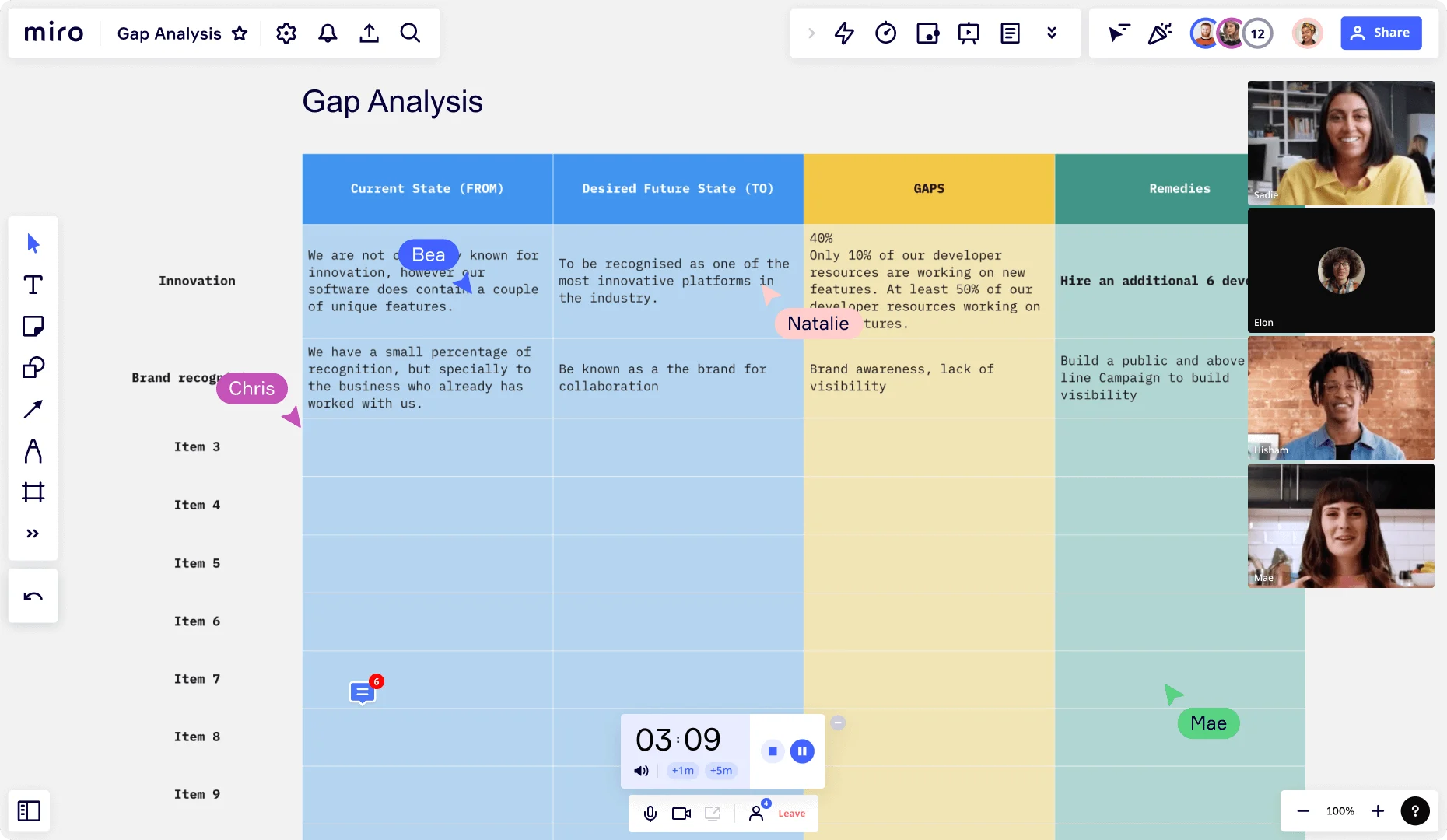
Close the gap: Proven gap analysis example tools for effective planning

Summary
In this guide, you will learn:
- What gap analysis is and how it helps identify performance differences
- How to use Miro’s gap analysis templates for collaboration
- Various gap analysis frameworks: BCG matrix, VRIO, Porter’s Five Forces, strategy maps, and risk matrices
- Step-by-step instructions for conducting gap analysis
- How to create action plans to close performance gaps
- Ways Miro’s workspace supports ongoing monitoring and adjustment
Try Miro now
Join thousands of teams using Miro to do their best work yet.
When it comes to strategy and planning, there's one tool that consistently helps businesses level up: gap analysis. Whether you're launching a new product or streamlining operations, understanding where you stand and where you need to go is crucial. That's where gap analysis shines. And with Miro's innovation workspace, you can turn strategic planning into a dynamic, collaborative experience.
Ready to dig into the details? Let's explore some powerful gap analysis examples that can guide you in your journey.
Gap analysis explained
Before we jump into examples, let's get clear on what gap analysis actually means. It's a straightforward yet essential process: identifying the difference between your current state and your desired state. Whether you're looking at your team's capabilities, market positioning, or business processes, gap analysis helps uncover what's missing—and what needs to happen to close the gap.
But don't mistake its simplicity for lack of depth. Gap analysis is a flexible framework that can be tailored to many aspects of your business. And when paired with the right tools—like Miro's interactive templates—it becomes even more powerful.
Why you need to know our gap analysis examples
Let's face it: strategy without structure often leads to confusion. A well-executed gap analysis gives you the structure you need to move forward confidently. Plus, having clear examples at your disposal is like having a shortcut through complex planning stages.
By using proven frameworks—like SWOT analysis or Porter's Five Forces—you can quickly identify where your strategy might be falling short and where you should double down. We've pulled together a handful of templates in Miro to help you get started. Let's dive into how you can use these in your own gap analysis.
How to create your gap analysis with Miro
Miro's innovation workspace is built for visual thinkers and collaborators. Whether you're tackling a project solo or brainstorming with a cross-functional team, our templates make it easy to structure your analysis and capture insights in real time—or asynchronously, whenever suits your team. Here's a quick guide on how to build a gap analysis in Miro.
1. Start with a ready-made template
Don't start from scratch! Miro's gap analysis template is your go-to for quickly laying out where you are versus where you want to be. The best part? You can collaborate in real time or asynchronously with your team, adding comments, links, and even integrating external data.
2. Use Miro AI to fill in gaps
With Miro AI, you can speed up your analysis by generating insights based on your input. For example, AI can help suggest missing factors in your SWOT analysis or point out competitive threats you may not have considered.
3. Collaborate effortlessly with Docs and Data Tables
Miro's new Docs feature allows you to create and organize detailed documentation right within your workspace. Add your team's notes, research, or meeting takeaways directly into your gap analysis for easy reference. Data tables help you structure key metrics or performance indicators, giving you a clear visual representation of your progress.
4. Visualize and share the strategy
Turn your gap analysis into a clear visual plan. Whether you're using the strategy map or risk matrix templates, you can easily drag and drop elements, making it simpler to share and communicate with stakeholders. Real-time collaboration means updates are instant, and everyone stays on the same page.
Get inspired with some of our gap analysis examples
Looking for some tried-and-true methods to guide your strategic planning? Here are some of Miro's top templates for gap analysis. Each offers a unique lens for identifying and closing the gaps in your strategy:
1. Gap analysis template
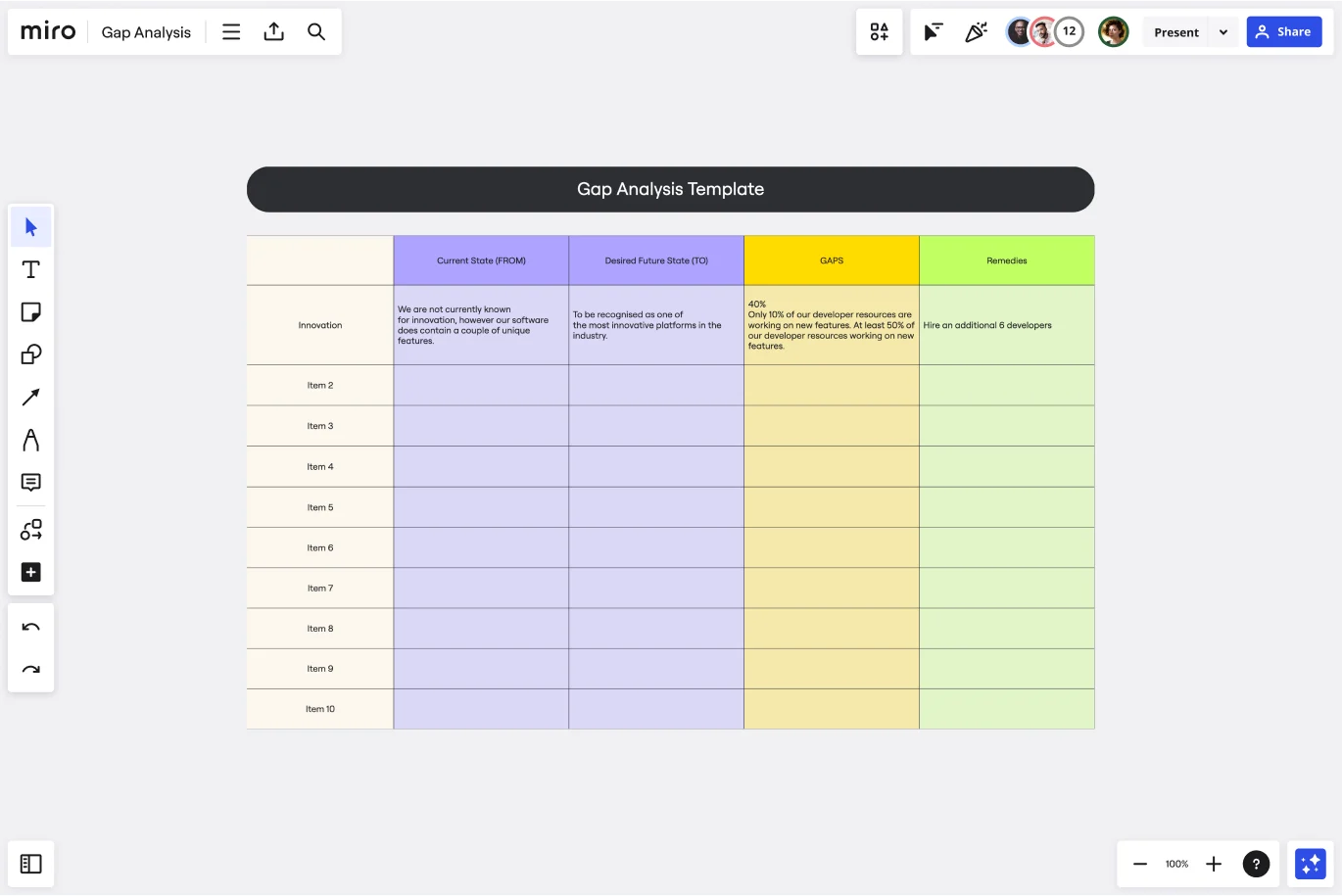
This gap analysis template is the go-to for comparing your current state with your desired goals. It lays out the differences between where you are now and where you want to be, giving you a clear roadmap for change.
2. SWOT analysis
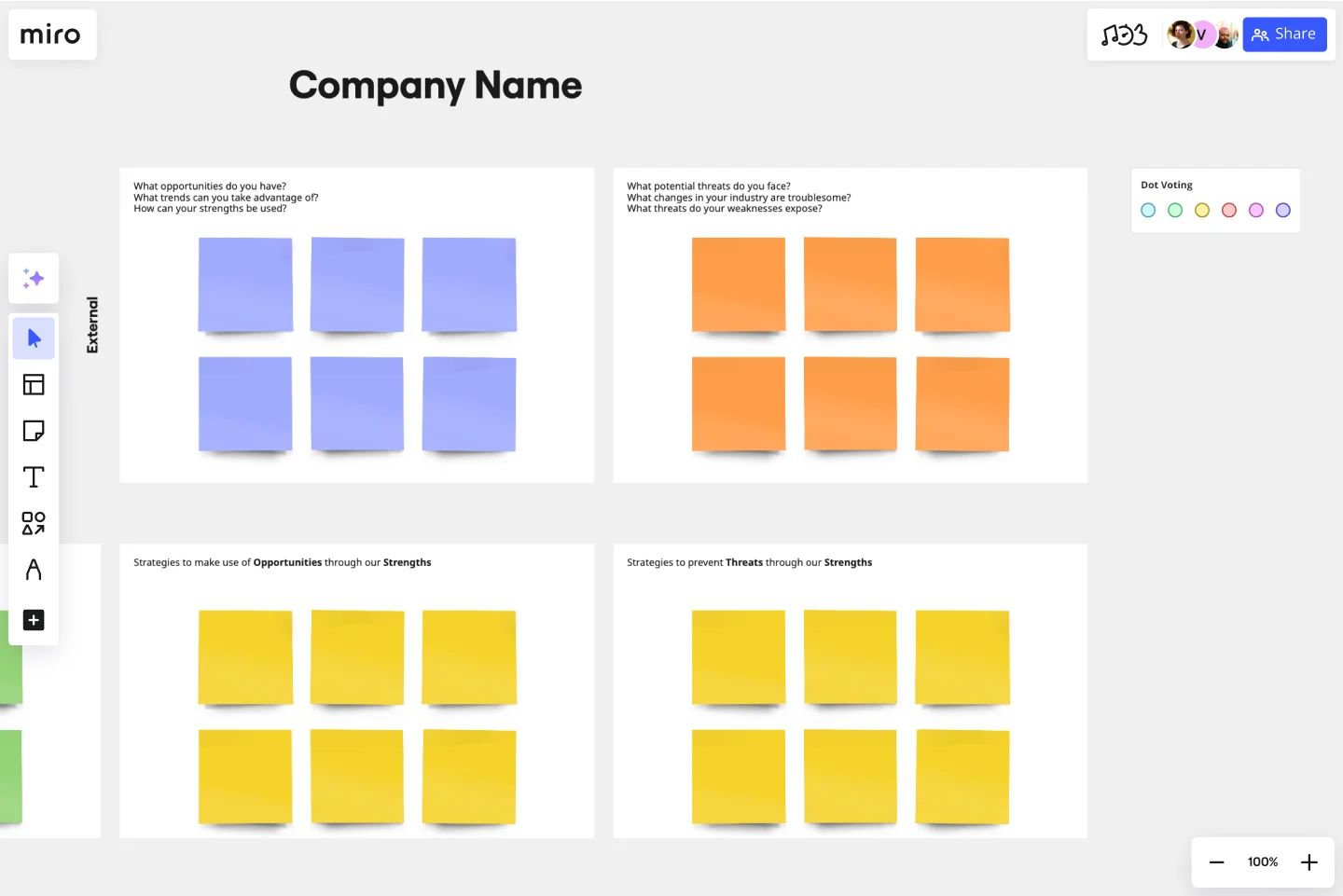
You've probably used this classic tool before, and for good reason. The swot analysis template helps you map out your strengths, weaknesses, opportunities, and threats—making it easier to see where you have gaps in your capabilities or market position.
3. Competitive analysis

Sometimes, the biggest gap is between you and your competition. This competitive analysis template helps you assess where your competitors are outperforming you—and how you can close that gap.
4. 4C analysis
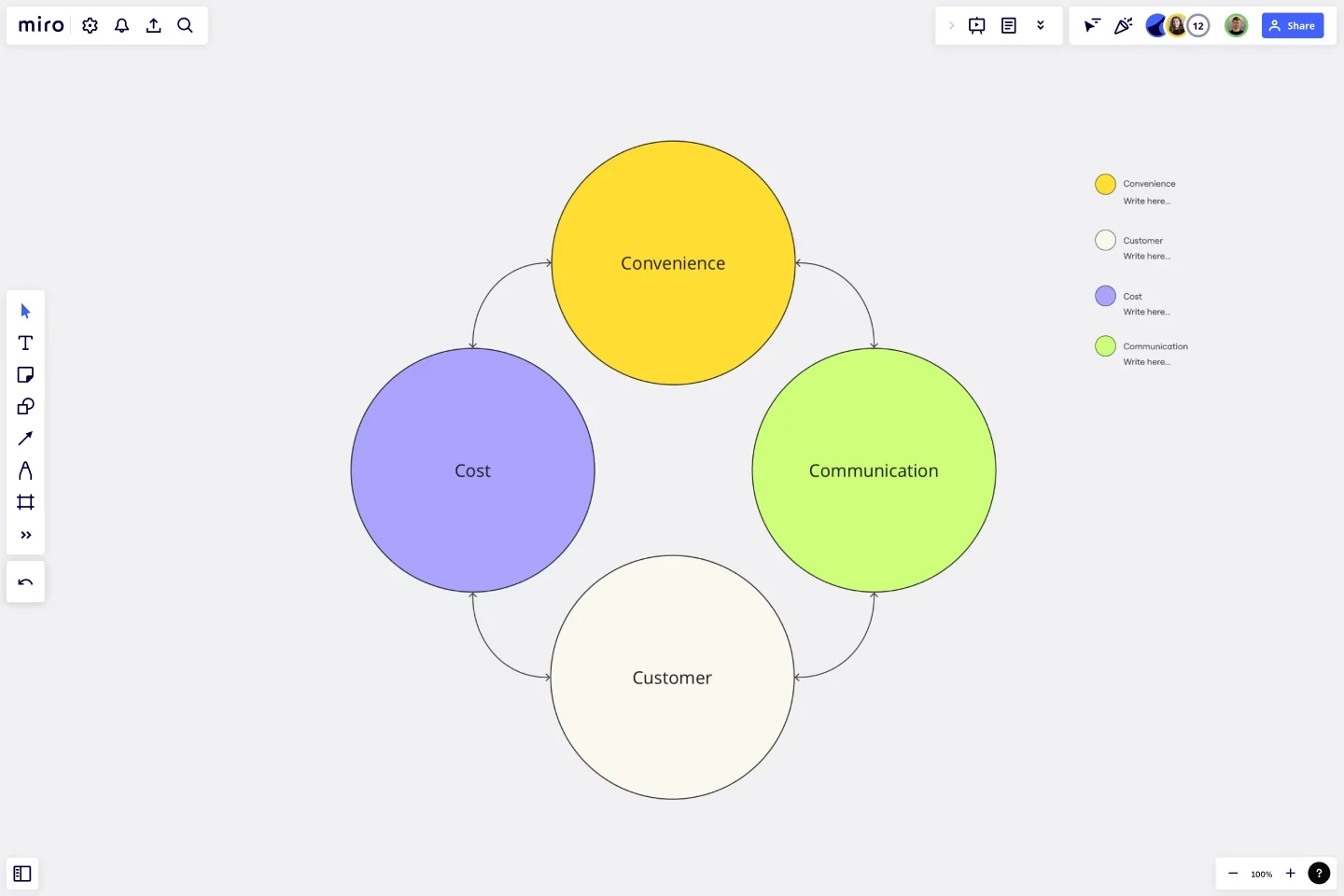
Take a closer look at the company, customers, competitors, and collaborators in this 4C analysis framework. It's great for identifying external factors impacting your business and discovering opportunities to collaborate or adjust your strategy.
5. 3C analysis
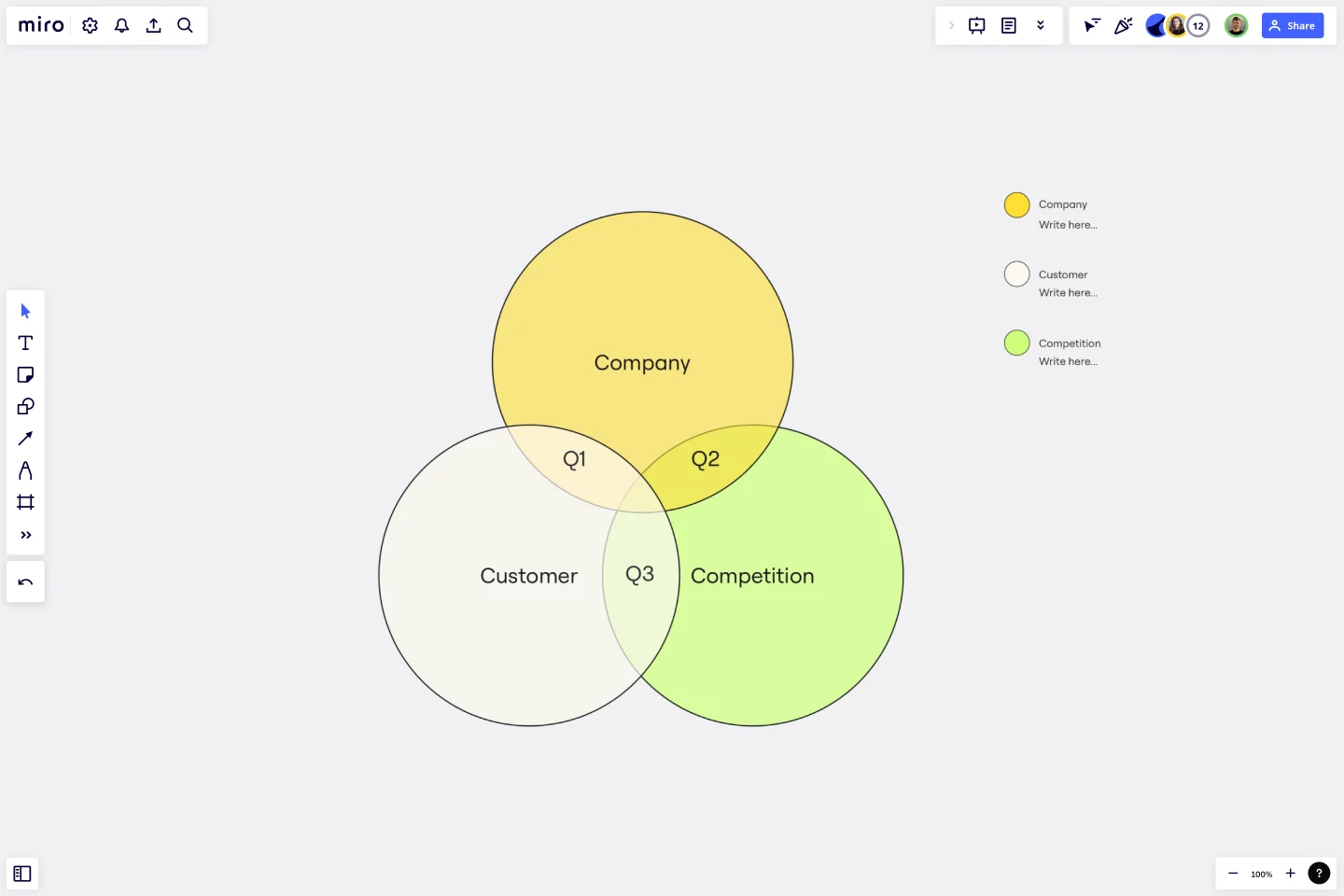
A slightly narrower version of the 4C analysis, this 3C analysis template focuses on the company, customers, and competitors. It's ideal for businesses looking to sharpen their focus on direct competition and internal processes.
6. BCG matrix

Mapping out your products or services on the BCG matrix template can help identify gaps in your portfolio. This template shows you which offerings are your stars, cash cows, question marks, or dogs—so you can make smarter investment decisions.
7. VRIO analysis
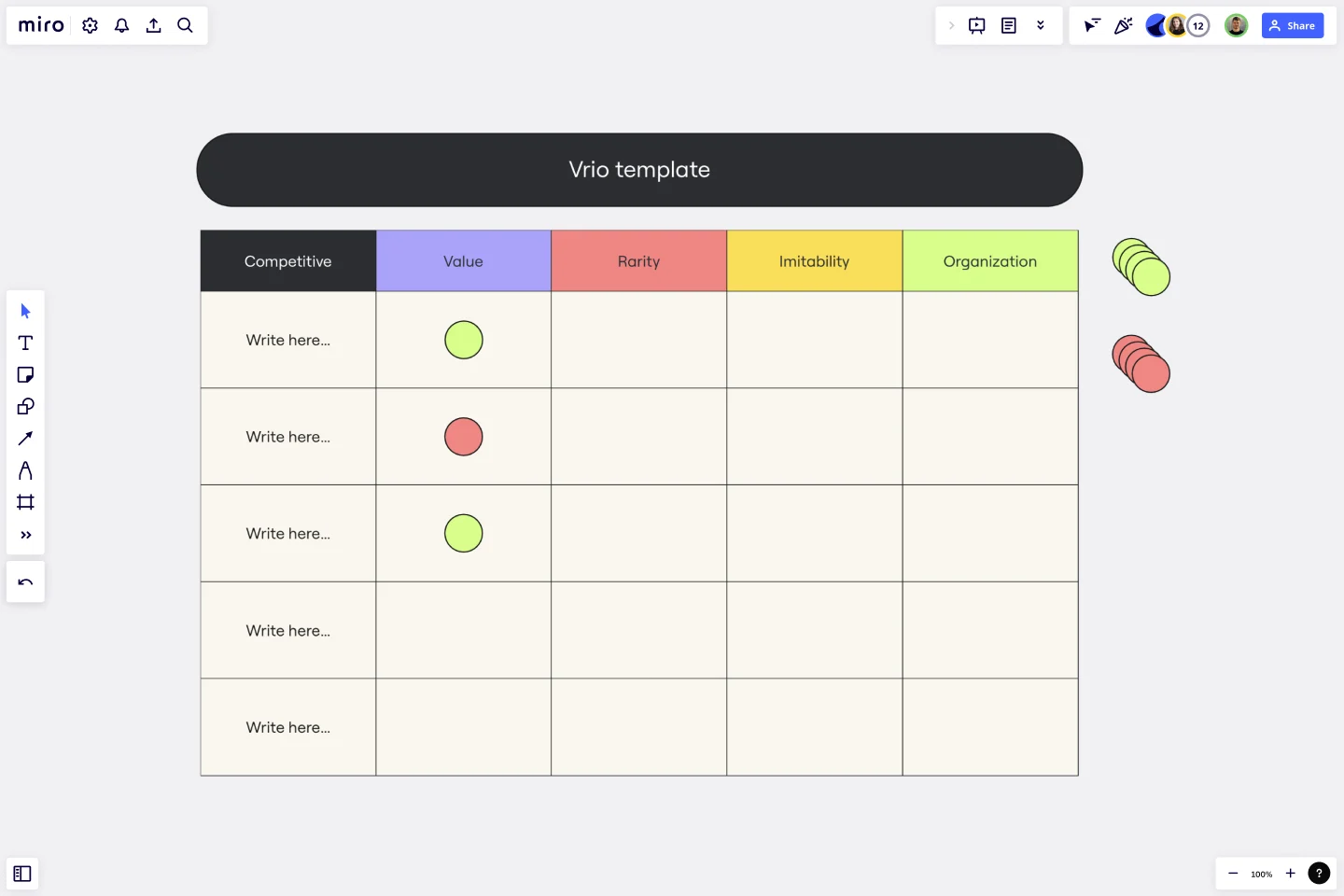
Want to know if your resources are giving you a competitive advantage? Use the VRIO template to assess whether they are valuable, rare, inimitable, and organized to drive your business forward.
8. Porter's Five Forces
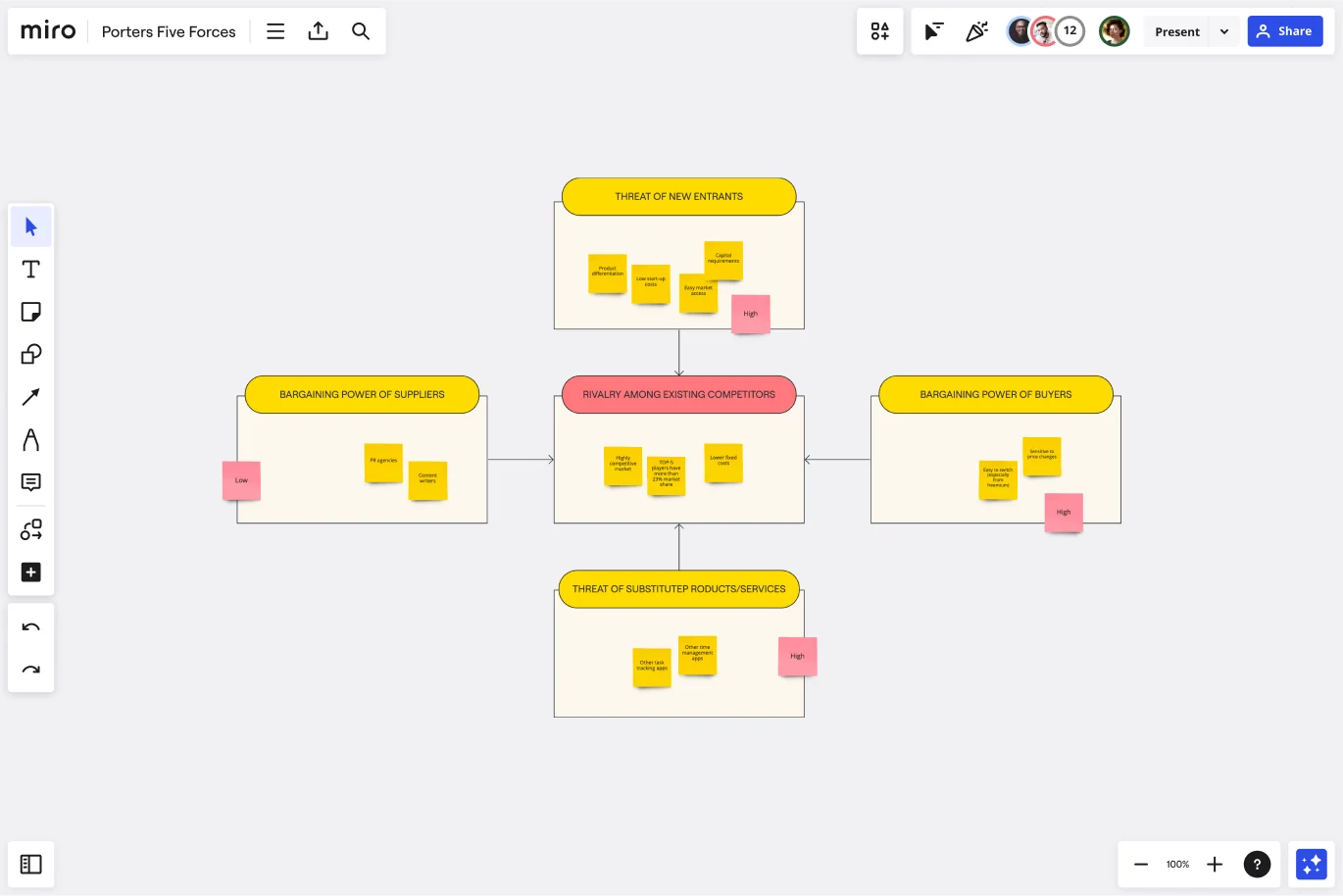
This framework helps you assess the competitive pressures in your market. By looking at the five forces template (competitor rivalry, supplier power, buyer power, threat of substitution, and threat of new entry), you'll better understand the external gaps that may threaten your position.
9. Strategy map

Use this strategy map template to create a clear visual representation of your strategic goals. Mapping out your key objectives and how they connect ensures everyone on your team understands the big picture.
10. Risk matrix

Every strategy comes with risks. The risk matrix template helps you assess the probability and impact of potential risks so you can prioritize your efforts and plan contingencies.
Take your gap analysis to the next level with Miro
Creating a gap analysis can feel daunting—but not when you have the right tools in place. Miro's innovation workspace turns traditional strategic planning into a dynamic, collaborative experience. With real time and async features, intuitive templates, and powerful integrations like Miro AI and Data Tables, closing the gaps in your strategy has never been easier. Explore our gap analysis templates today and take your planning to the next level.
Author: Miro Team
Last update: October 22, 2025